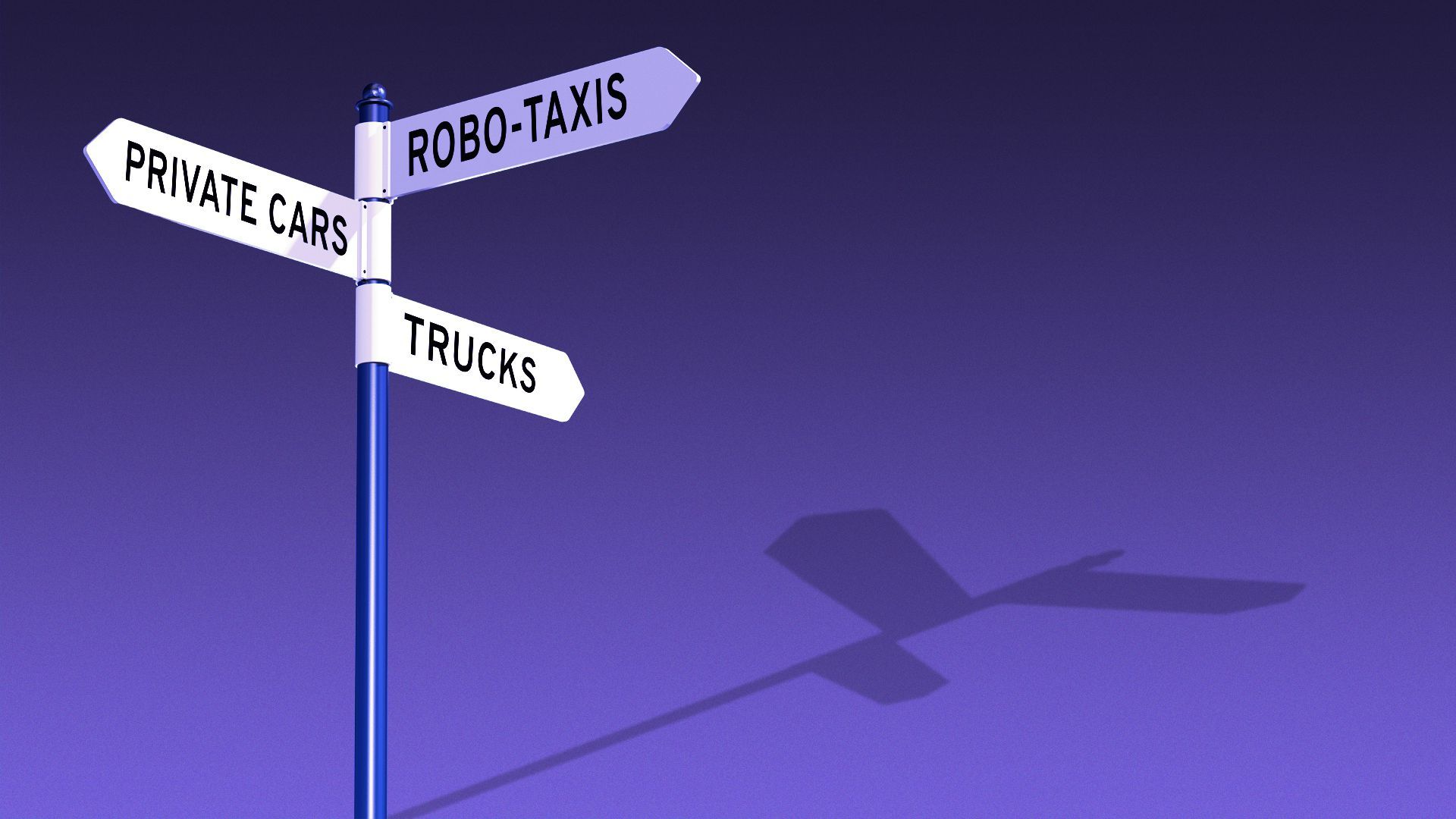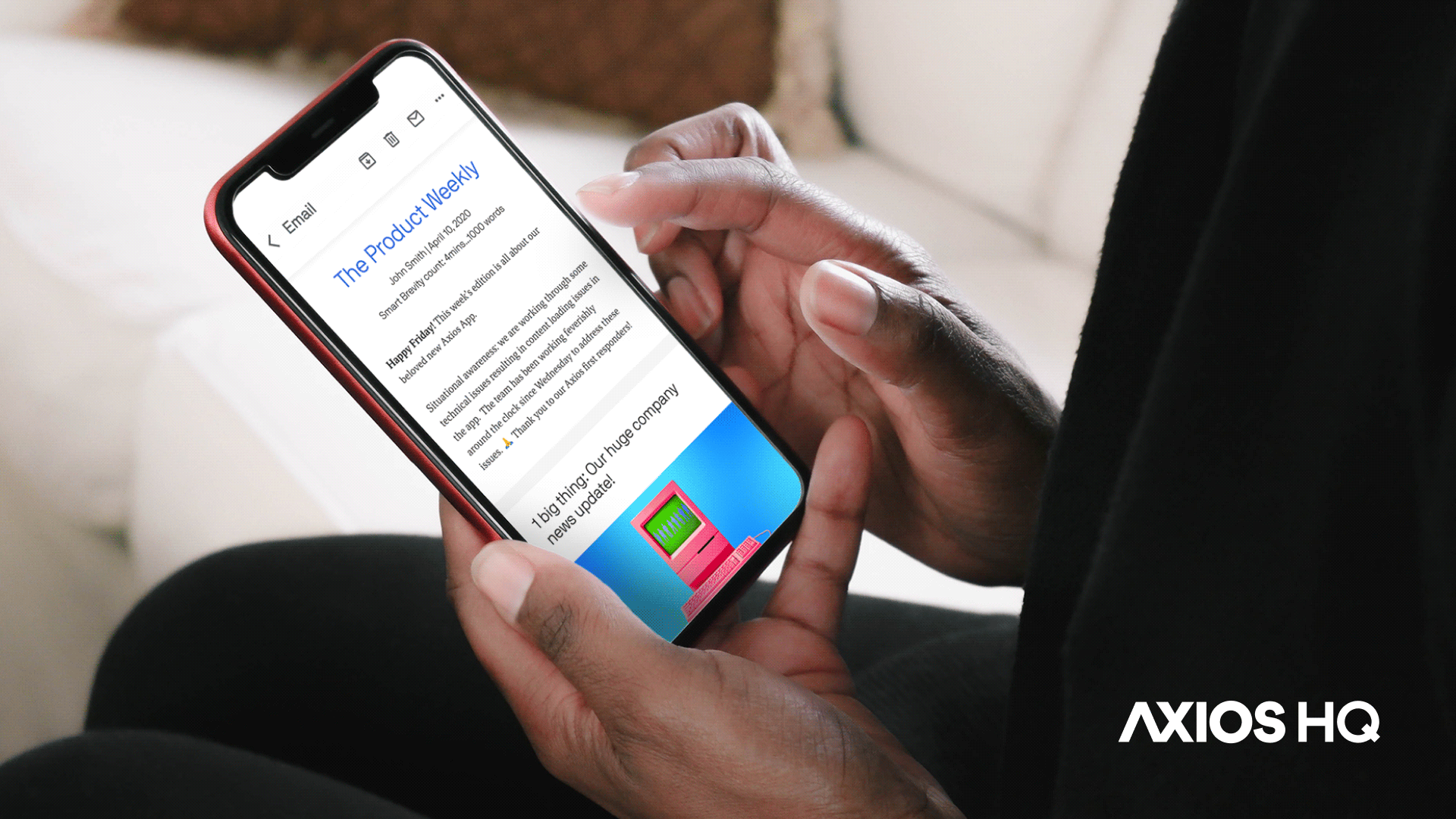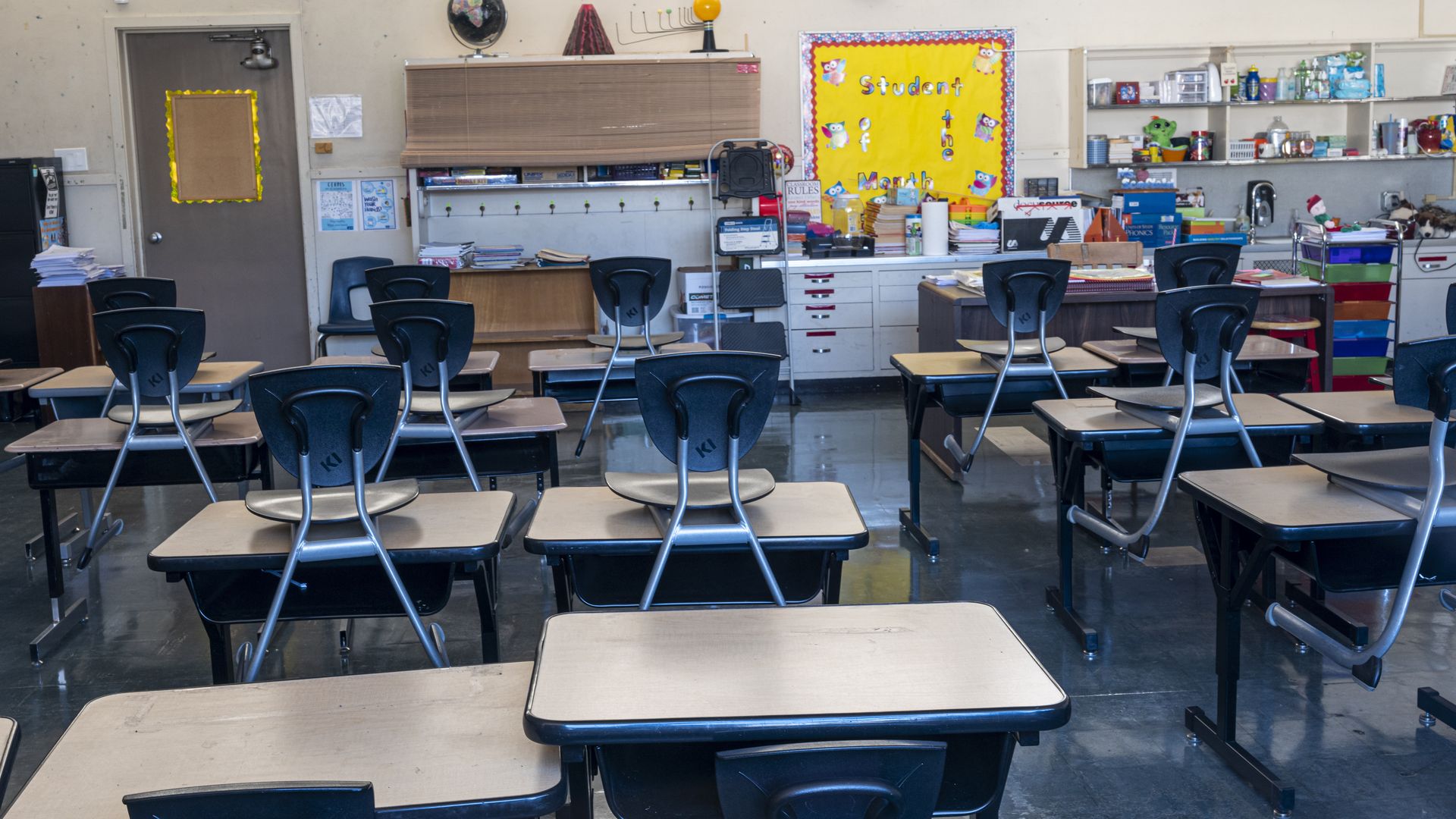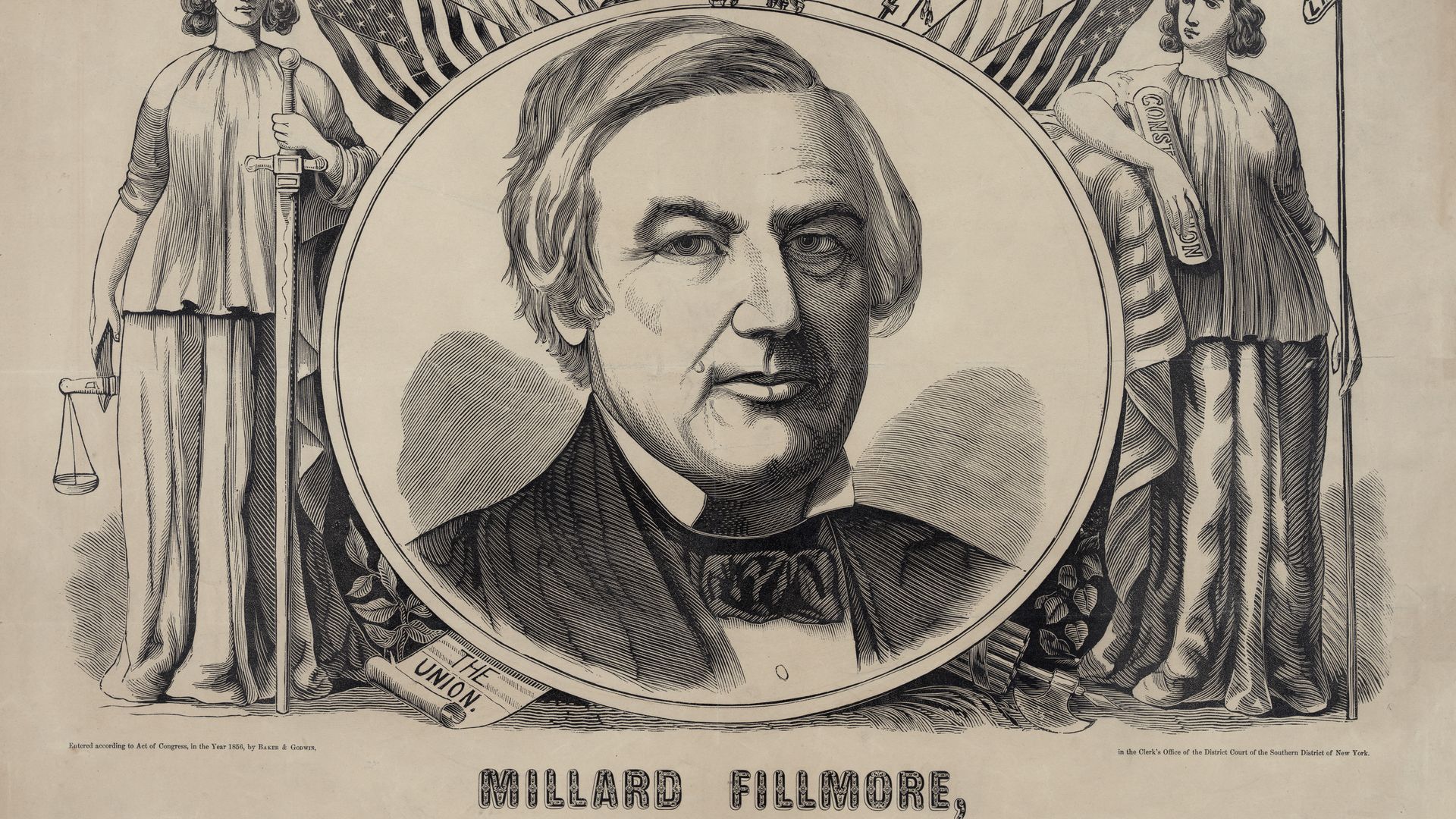| | | | | | | | | | | Axios What's Next | | By Bryan Walsh, Joann Muller and Erica Pandey ·Jul 28, 2021 | | Wednesday brings us new approaches to autonomous vehicles, digital detox cafes, and historically unpopular U.S. presidents. "What was next" trivia: On this day in 1943, war rationing on what consumer good was lifted? Hint: This newsletter runs on it. - Credit to reader Bradley Olsen for being the first to note that chewing gum was patented on July 27, 1869.
- Send your answer, along with tips and feedback, to whatsnext@axios.com.
Today's Smart Brevity count: 1,266 words ... 4½ minutes. | | | | | | 1 big thing: Self-driving technology reaches a crossroads |  | | | Illustration: Shoshana Gordon/Axios | | | | The autonomous vehicle race is turning into a marathon, and the competitors are splintering off in different directions in search of the fastest, safest and most profitable road to self-driving technology, Joann Muller writes. The big picture: It's boiled down to a three-way contest among autonomous trucks, driverless robotaxis and privately owned cars that sometimes drive themselves. - Wall Street loves self-driving trucks at the moment. And the leading robotaxi developers are still able to raise private capital and borrow billions while fetching huge valuations.
- The underdogs making surprising gains are suppliers of advanced driver-assistance systems (ADAS) like adaptive cruise-control and lane-keeping tech. They're taking a bottom-up approach, gradually adding new features until they can achieve full self-driving capability.
The intrigue: ADAS suppliers, like camera sensor specialist Mobileye, have built-in advantages over companies pursuing those other strategies. They already make money selling their tech to carmakers, and because millions of cars are already equipped with some form of driver-assistance technology, they have the potential to scale more quickly. Why it matters: At stake are billions of dollars in sunk investment, which for some companies could wind up being wasted. - The worry for robotaxi hopefuls, as the FT reported (subscription), is that the evolutionary approach by ADAS companies will succeed before they do.
- "There's no more dispute around whether robotaxis are real: they are real today," Karl Iagnemma, CEO of self-driving company Motional, told the FT. "The question is whether the other guy can come along and do the same service, the same product, but at half the price. If you've got a competitor who's in that position, you're in big trouble."
The state of play: Autonomous trucks are likely to beat self-driving cars to market because the economics are more favorable. - The pandemic showed how important trucking and logistics are to the economy, but companies are struggling with a shortage of drivers.
- Leading AV truck players like TuSimple, Plus, Embark and Kodiak Robotics are preparing to launch self-driving rigs, while traditional truck manufacturers like Freightliner and PACCAR are signing deals to add AV tech from companies like Waymo and Aurora into their cabs.
Robotaxis, meanwhile, are inching closer to deployment. Companies like Waymo, Cruise and Amazon-backed Zoox are building their own ride-hailing networks. Others, like Argo AI and Motional, aim to deploy cars equipped with their tech on existing ride-hailing networks. - Yes, but: Robotaxis won't be deployed at scale for years, if not decades. Instead, they'll be limited to small, slow-moving fleets in specific urban neighborhoods.
Read the rest |     | | | | | | 2. The rise of digital detox dining |  | | | Illustration: Sarah Grillo/Axios | | | | A growing cohort of restaurants around the world are offering a respite for tech-addicted diners: a digital detox at the table, Erica Pandey writes. What's happening: Cafes and fine dining establishments alike are taking away phones to encourage customers to unplug, enjoy the meal and actually talk to one another, as if it were the 1990s or something. These spaces are becoming even more popular in the post-pandemic world as people emerge from months of digital overload. Details: The James NoMad hotel in Manhattan experimented with a Digital Detox package that gave guests 10% off the room rate for every night they went without phones, MarketWatch reports. Guests gave their phones to the front desk when they checked in and were assigned device-free rooms without TVs or alarm clocks. - Hearth, in Manhattan's East Village, puts boxes on the tables for guests to stash their phones during the meal.
- The French House in London has a hard ban on phones and will kick patrons out for using devices, per the London Evening Standard.
Some establishments are trying lighter versions of the detox: Fergie's Pub, a Philadelphia bar, has done away with TVs. And several coffee shops aren't stripping customers of their phones but are no longer offering WiFi in an effort to discourage device use. Read the rest |     | | | | | | 3. Universal internet access would boost remote work productivity |  | | | Illustration: Sarah Grillo/Axios | | | | A new paper estimates that achieving universal high-quality internet access would boost economic output by $160 billion a year, Bryan Walsh writes. Why it matters: The internet and remote working technology cushioned the economic blow during the pandemic, but millions of Americans still lack quality online connections. Closing that gap could enhance labor productivity in a future where more work will be done from home. The big picture: In the paper, released this morning by the Aspen Economic Strategy Group, researchers found that moving to universal high-quality internet access would increase earnings-weighted labor productivity by an estimated 1.1% in the coming years. - That's due in part to the fact that the researchers project that remote work will account for approximately 1 out of every 5 workdays in the post-pandemic era for the economy as a whole, with higher levels for more-educated and highly compensated workers.
By the numbers: The researchers found that between May 2020 and April 2021, subpar internet access reduced earnings-weighted productivity by 3%. - During the trough of the pandemic-driven economic crash, in the second quarter of 2020, economic output fell by 11%.
- "If we had an 8% drop instead of an 11% drop [with universal internet access], that would have been a big deal," says Steven Davis, an economist at the University of Chicago Booth School of Business and a co-author of the paper.
- "There are costs to not having that flexibility, and there are benefits to having it," he adds.
|     | | | | | | A message from Axios | | Leaders say company updates are inconsistent at best | | |  | | | | 86% of executives say ineffective communications are the cause of workplace failures Axios HQ helps you streamline your internal comms — like all-staff updates and department news — by helping you distill and disseminate the updates that matter most in a clear and consistent way. See how Axios HQ works. | | | | | | 4. U.S. students fell 4 to 5 months behind during pandemic |  | | | An empty classroom in Pinole, Calif. Photo: David Paul Morris/Bloomberg via Getty Images | | | | Elementary school students in the U.S. ended the school year four to five months behind their expected level of academic achievement, according to a new report, Bryan writes. Why it matters: Months of school closures and often inferior remote education eroded what schoolchildren would have learned since the pandemic began, and caused some to go backwards. - The effects of pandemic-driven learning loss will weigh on the economy for decades ahead, and could worsen if schools can't reopen normally in the fall.
By the numbers: Researchers from McKinsey compared academic achievement for K-12 students after the 2020-21 school year to matched students from previous years and found that students were testing 10 points behind in math and 9 points behind in reading on average. - The numbers were worse for historically disadvantaged students — students in majority Black schools ended the year with six months of unfinished learning, while students from low-income schools finished seven months behind.
The big picture: The authors wrote that "unless steps are taken to address unfinished learning, today's students may earn $49,000 to $61,000 less over their lifetime owing to the impact of the pandemic on their schooling." - That translates to an impact on the U.S. economy of $128 billion to $188 billion every year as these students enter the workforce.
Share this story |     | | | | | | 5. 1 history thing: Bad news for Millard Fillmore |  | | | I'm not sure what he ever did to deserve it — or what he ever did, period — but Americans do not like Millard Fillmore. Photo: GHI Vintage/Universal History Archive/Universal Images Group via Getty Images | | | | Just 1% of Americans surveyed by YouGov had a "very favorable" view of the country's 13th president, Bryan writes. - That's the lowest of all 46 U.S. presidents.
By the numbers: The most popular president — no surprise — was Abraham Lincoln, while Richard Nixon was the least popular overall. - But at least Nixon had 8% of respondents reporting a very favorable view — more than Fillmore.
Thought bubble: Like most Americans — presumably including the 53% who reported they had never heard of him — I don't know much about Fillmore. But I could dig up some facts: - Fillmore, a member of the Whig Party, is the last U.S. president who was neither a Democrat nor a Republican.
- He took over after the somewhat mysterious death of Zachary Taylor.
- His official White House biography calls him "uninspiring," which, ouch.
The bottom line: At least Fillmore can take some comfort in the judgment of history — the most recent C-SPAN Presidential Historians Survey ranked him as only the seventh-worst U.S. president. |     | | | | | | A message from Axios | | Leaders say company updates are inconsistent at best | | |  | | | | 86% of executives say ineffective communications are the cause of workplace failures Axios HQ helps you streamline your internal comms — like all-staff updates and department news — by helping you distill and disseminate the updates that matter most in a clear and consistent way. See how Axios HQ works. | | |  | | It'll help you deliver employee communications more effectively. | | | | | | Axios thanks our partners for supporting our newsletters. If you're interested in advertising, learn more here.
Sponsorship has no influence on editorial content. Axios, 3100 Clarendon Blvd, Suite 1300, Arlington VA 22201 | | | You received this email because you signed up for newsletters from Axios.
Change your preferences or unsubscribe here. | | | Was this email forwarded to you?
Sign up now to get Axios in your inbox. | | | | Follow Axios on social media:    | | | | | |
No comments:
Post a Comment